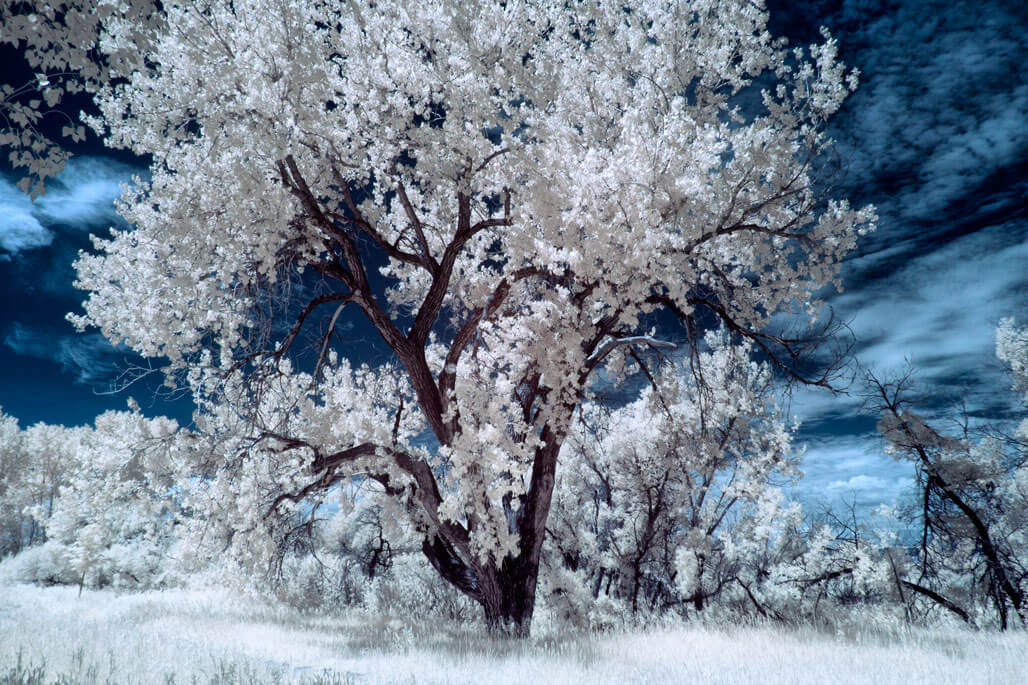Nanometers and Infrared Photography
Today’s Post by Joe Farace
What a difference a nanometer makes.”—I think Frank Sinatra sang that…
 The wavelength of light is measured in nanometers or one billionth of a millimeter or microns that are a millionth of a meter. (Sometimes the term millimicron is used.) Red light begins at wavelengths of 0.65 microns. Violet light has wavelengths around 0.4 microns and yellow light waves are 0.6 microns. Your eyes cannot see any light with a wavelength longer than 0.7 microns.
The wavelength of light is measured in nanometers or one billionth of a millimeter or microns that are a millionth of a meter. (Sometimes the term millimicron is used.) Red light begins at wavelengths of 0.65 microns. Violet light has wavelengths around 0.4 microns and yellow light waves are 0.6 microns. Your eyes cannot see any light with a wavelength longer than 0.7 microns.
Light with wavelengths from 700 and 900nm are typically called infrared and it’s a thousand times wider than visible light yet totally invisible. Infrared film and some video cameras are sensitive to what’s called near infrared. Filters for IR photography are made in different strengths based on what band of light they can capture.
A Hoya R72 Filter or Kodak Wratten 89b Filter blocks visible light up to 720nm. This is equivalent to what LifePixel calls their “Standard Color IR Filter.” Recently, I had a Panasonic Lumix G6 converted by LifePixel using their “Enhanced Color IR Filter” that’s equivalent to a 665nm Filter and allows more color to pass and is well suited for color IR photography with more saturation and color range. LP says “BW looks quite good although with a bit less contrast” but a little less contrast is a good thing and produces excellent black & white images. The above images compares RAW files (of the same tree) made with the Standard (top) and Enhanced (bottom) filters.
What you can do with cameras converted to the “Enhanced Color IR Filter” is Photoshop tricks (using a Channel Mixer Adjustment Layer) and produce something that blends relativity and unreality at the same time. Shot with an Lumix G Vario 12-32mm f/3.5-5.6 ASPH lens and an exposure of 1/400 sec at f/11 and ISO 400, converted from the above RAW file.
Tip: Try infrared by having an old camera that’s gathering dust converted to IR-only operation. You can save a few dollars when converting your camera to infrared at LifePixel by using the coupon code “farace.”




